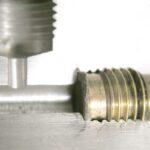Having perfect feet is like a dream for most people. Many things from shoe style to medical problems, including diabetes can lead to foot imperfections, which can cause feet ache or pain. If you are looking for the best solution to treat your foot pain, then you must opt for orthotics.
Dr. SimaSoltani Podiatry Office is a professional custom orthotics in Orange County, California, U.S. as they have over 20 years of experience in treating various foot-related issues, from toenail to foot pain, at reasonable rates.
Differences between inserts and orthotics
You can purchase inserts in stores without prescription to provide support and cushioning for the foot, but they can’t your foot issues. If you are facing problems with walking, standing, or running, custom orthotics are an ideal option. They can help to get relief from foot pain ache caused due to various medical problems, including arthritis, bursitis, diabetes, plantar fasciitis, and others.
Orthotics provide the exact support that you need as they are made to fit the size and contour of the feet. Inserts, which are not custom made end up creating much pain rather than resolving it.
Benefits of orthotics
The following are a few benefits of orthotics that help you to understand how orthotics can help to correct your foot problems.
Corrects underlying cause
Although discomfort is one of the symptoms of foot pain, the major culprit is structural abnormalities like high arches or collapsed arches. In such a case, orthotics can correct the cause and helps you in getting relief from the pain.
Alleviates pressure
Orthotics not only provides support but also cushions your feet by redistributing the pressure, which helps people who stand for long periods and people with arthritis. Also, it helps to prevent ulcers and other abnormalities associated with diabetes.
Enhances ankle, back, and knee health
People with ankle, back, or knee health can benefit from orthotics as they help to maintain healthy motion range and proper alignment. Foot issues can lessen mobility and create pain in muscles, tendons, and joints. This creates stress over the bony structures and soft tissues in the lower and back extremities. Orthotics can avoid these issues and returns the proper alignment of the feet.
Enhances athletic performance
Foot abnormalities affect both young athletes and seasoned warriors alike. Foot pain disturbs your activities from golf stance to weekend cycling. With the help of orthotics, you can defeat the pain that restricts your performance.
Improves overall health
Whether you are running or working out, orthotics can help to make things easier and more enjoyable.
Kinds of orthotics
Functional or rigid orthotics –This orthotics are made with materials such as carbon fiber or plastic. They are ideal for dress or walking shoes with low heels and closed toes and they are made to ease strain and aches of the feet and lower back legs, and thighs pain.
Accommodative or soft orthotics –This orthotics are made with compression materials, so they can provide cushioning to the feet. This helps to relieve pressure from foot issues like diabetic foot ulcers or plantar fasciitis.
In addition to the above, you can find special orthotics for sports, including ice skates and ski boots.
What is the cost of orthotics?
The cost of orthotics is expensive compared to insoles and it depends on many factors. However, the cost varies from $200-$800 and the resurfacing cost varies from $50-$100. Also, you have to choose the style depending on your need like full-length inserts for hiking or sneaker boots.
How orthotics is made?
Making quality orthotics involves a multi-step process. They include:
Evaluation After consulting your podiatrist, you have to go through an examination, such as:
- Motion test
- Muscle examination
- Symmetry
- Toe wear
- Heel tipping
- Foot casting
After completing the examination, your feet will be cast. Your foot doctor will do:
- Non-weight bearing foot casting
- Placing the foot in the neutral position
The common foot casting method is done with plaster strips. In this method, wet strips are wrapped over the foot and sent to the lab. This plaster takes around a day to harden, then your foot doctor removes it and stores before sending it to the lab.
- Lab
After foot casting, your prescription and foot mold will be sent to the laboratory. The prescription includes dimensions, materials, and accessories used in making orthotics. Also, it includes the specifications and measurements taken from the examination. The lab follows the below steps while making the orthotics, such as:
- An individual cast is wrapped over plastic material or graphite sheet under intense heat
- Durable and comfortable material is attached for the arch structure and harder heel
Materials
For optimum results, orthotics are made with materials that resist various motions and forces, which you will keep over the feet. These materials are not only rigid but also control irregular injury as well. Also, comfortable and flexible that is compatible with the activities. Usually, 2 kinds of materials are used in making orthotics:
- Plastic
- Graphite
Materials that are suitable for one individual may not be suitable for others as each individual foot needs individual attention. Choose a professional podiatrist who offers the best custom orthotics and consult today to get the suitable one for you.
 Make Your Child’s Visit to the Dentist’s Office Enjoyable
Make Your Child’s Visit to the Dentist’s Office Enjoyable  Mastering Online Masterclasses: Choosing the Right Online Violin Instructors
Mastering Online Masterclasses: Choosing the Right Online Violin Instructors  Empowering Healthcare Professionals: How WT Farley Oxygen Regulators Enhance Patient Care
Empowering Healthcare Professionals: How WT Farley Oxygen Regulators Enhance Patient Care  Elevate Your Collection: Unveiling the Beauty of Custom Wine Cellars in Ottawa
Elevate Your Collection: Unveiling the Beauty of Custom Wine Cellars in Ottawa  Enhancing Your Online Presence with Real Estate SEO Services
Enhancing Your Online Presence with Real Estate SEO Services  The Epitome of Luxury: Elevating Spaces with Imperial High-End Kitchen Cabinets
The Epitome of Luxury: Elevating Spaces with Imperial High-End Kitchen Cabinets  Pokémon go accounts- Exploring the reasons behind player demand
Pokémon go accounts- Exploring the reasons behind player demand  Pokemon go shortcut to greatness – Buy now
Pokemon go shortcut to greatness – Buy now  Online slot games for classic fruit machine lovers
Online slot games for classic fruit machine lovers 




